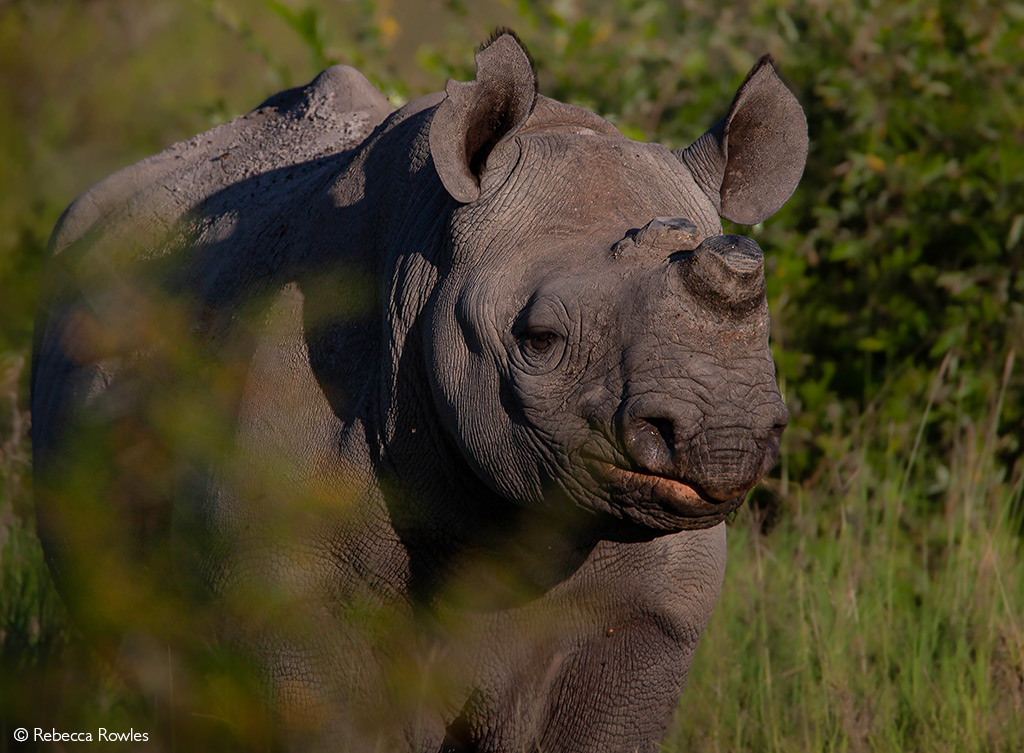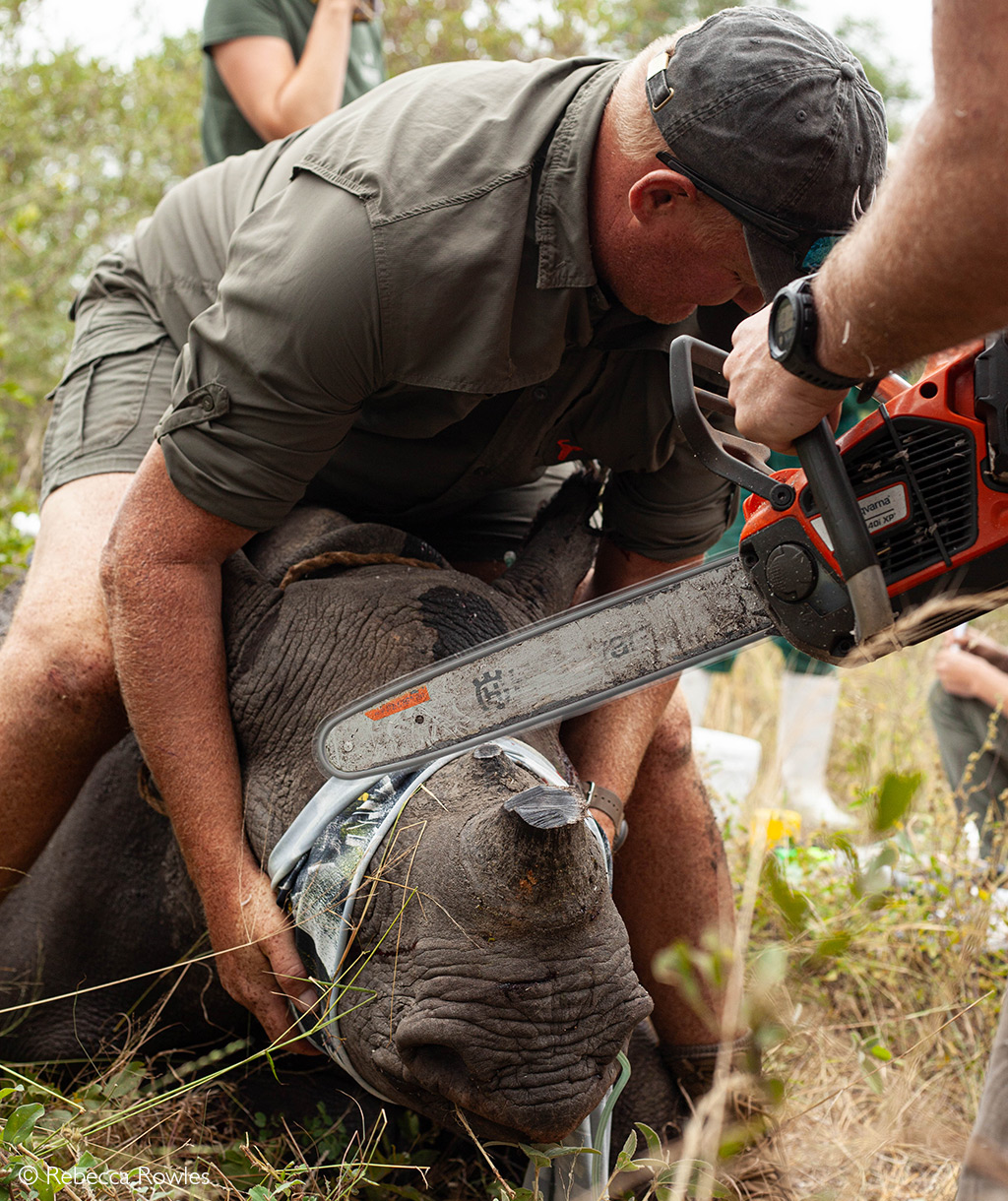
In an effort to address the rhino poaching crisis of the past two decades, removing the horns of at-risk rhinos has become a vital prong of anti-poaching strategies across southern Africa. However, a new study has shown for the first time that dehorning may change the natural behavioural ecology of black rhinos.
Black rhinos are primarily solitary animals living within delimited home ranges and are generally considered less gregarious than their larger white rhino relatives. Previous studies have shown that horns directly affect territoriality and agnostic activities. This is particularly true for male-male interactions, with one study indicating that males with larger horns dominated 65% of encounters. Thus, removing their horns can influence competition for mating rights, territory and, ultimately, their social demography. There is a growing body of research on the effects of dehorning on rhinos, yet prior to this study, little was known about its long-term impact on black rhinos in particular.
The paper’s authors analysed 15 years’ worth of rhino sightings from ten reserves in South Africa (from 2005 to 2020). This included temporospatial data from 368 individual black rhinos and all natural and poaching mortalities. During that time, the percentage of dehorned black rhinos increased from 0% to 63% across the study sites.


They found that home range size of individual animals decreased by an average of 45% of their previous size. The effect was most pronounced in females, with a 53% reduction compared to 38% in males. Individuals sometimes lost as much as 80% of their previous territories. Further investigation from three of the study sites with robust data (Ithala Game Reserve, Phinda Private Game Reserve and Manyoni Private Game Reserve) also revealed a significant decline in the frequency and strength of social interactions, especially between bulls. The researchers speculate that this decline may be due to increased feelings of vulnerability in dehorned rhinos, causing them to retreat into smaller territories and avoid confrontation. However, the scientists acknowledge that they could not evaluate the exact mechanisms behind the behavioural changes.
The authors highlight at least three reasons these behavioural changes could have “cryptic but powerful population-level consequences” for black rhinos. First, dehorned individuals may be forced into “ecological traps” in poorer-quality habitats. Second, decreased social interactions could alter their dominance patterns and reproductive success. And finally, with decreased home ranges and reduced explorative behaviour, dehorning black rhinos could reduce recruitment (the addition of individuals through immigration or birth and maturation) in new landscapes. Furthermore, the changes brought about by dehorning could significantly impact the calculation of the carrying capacity of reserves.
However, it is essential to note that the study found no link between dehorned rhinos and increased mortality. Dehorned black rhinos are no more likely to die of natural causes (for example, in a fight between individuals) than those still possessing their horns. Poaching mortalities also declined across all ten study sites, though the authors do not believe this data is sufficient to infer a causal relationship between dehorning and poaching. They point to several other variables that would have influenced poaching rates, including increased security measures and COVID lockdown regulations.

Final thoughts on rhino dehorning
There are many variables and parameters to consider when evaluating the impact of dehorning on the individual well-being, social demography and overall population dynamics of rhinos. These include everything from stress hormone levels, breeding intervals, calf mortality, home range, and habitat usage. Ultimately, the choice of what to analyse will significantly affect the conclusion about the potential harm of dehorning the rhino population (none, slight, significant). Long-term population effects may also take several years to manifest, meaning we are only now in a position to start observing them. Furthermore, inferences cannot be drawn from research conducted on one species of rhino (white or black) and applied to the other. However, every piece of research on dehorning – both in terms of its efficacy as a poaching deterrent and its effect on the animals – will add another piece to the puzzle.

There can be no question that removing rhinos’ horns (whether white or black) will impact them in some way. It is more important to establish the severity of these effects so that the costs can be balanced against the potential benefits. As the authors conclude: “While dehorning may yet prove to be an essential anti-poaching measure, it must be implemented with extreme caution and be accompanied by rigorous monitoring to understand its long-term impacts.”
Reference (available through a paywall)
Duthé, V. et al. (2023) “Reductions in Home-Range Size and Social Interactions among Dehorned Black Rhinoceroses (Diceros bicornis),” Proceedings of the National Academy of Sciences of the United States of America, 120(25)
Resources
More than half of Africa’s rhinos are in private hands. With rising protection costs, what will it take to build a resilient private industry? Read more on the importance of private-sector rhino conservation here.
Rhino poaching continues to decimate Kruger National Park’s rhino populations. Read more on the latest rhino population figures here.
Read our analysis of the IUCN report containing the most recent rhino numbers, trends and poaching incidents here.
To comment on this story: Login (or sign up) to our app here - it's a troll-free safe place 🙂.![]()






